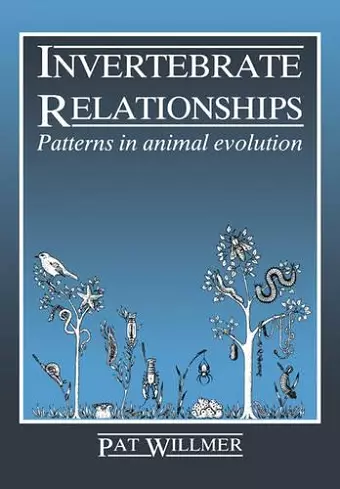Invertebrate Relationships
Patterns in Animal Evolution
Format:Paperback
Publisher:Cambridge University Press
Published:15th Feb '90
Currently unavailable, and unfortunately no date known when it will be back

Phylogenetic study is an important corner-stone of biology, for the evolutionary relationships between groups of animals bear heavily on the analysis of their physiology, behaviour and ecology. Despite this, there have been few books which analyse the diversity of animal life in terms of its origins, and the relationships between different groups.Phylogenetic study is an important corner-stone of biology, for the evolutionary relationships between groups of animals bear heavily on the analysis of their physiology, behaviour and ecology. Despite this, there have been few books which analyse the diversity of animal life in terms of its origins, and the relationships between different groups. In this book Pat Willmer draws on her experience of teaching invertebrate zoology to produce a stimulating account of both the relationships between invertebrate phyla and of the phylogenetic pattern of the animal kingdom. After reviewing the current state of the subject, the author discusses the various sources of evidence - structural, chemical, genetic, embryological and fossil - which bear upon the question of how living animals are related to each other. Much of this evidence has accumulated over the last two decades, yet there has been surprisingly little appreciation of the implications it has on phylogenetic research. Dr Willmer goes on to apply these lines of evidence to particular groups of invertebrates, discussing many of the classical problems of invertebrate phylogeny - the origins and relations of the lower metazoa, arthropod phylogeny, the protostome/deuterostome question, and the origin of chordates from invertebrates. The prevalence of convergent evolution is a strong theme of the book, as it becomes clear that many features, from details of cell chemistry and structure to overall body plan and life history, have been invented repeatedly and independently under similar selection pressures. This book succeeds in bringing together the previously scattered literature on invertebrate phylogeny, forming a unique introduction to this fascinating and controversial subject, and up-to-date review of invertebrate zoology.
'Anyone with an interest in phylogeny at high taxonomic levels should own this book, and this applies to undergraduates in biological and palaeontological sciences as well as to advanced students and veteran professionals. It is an excellent sorting-out of a traditionally difficult area.' James W. Valentine, Nature
ISBN: 9780521337120
Dimensions: 249mm x 174mm x 21mm
Weight: 839g
416 pages